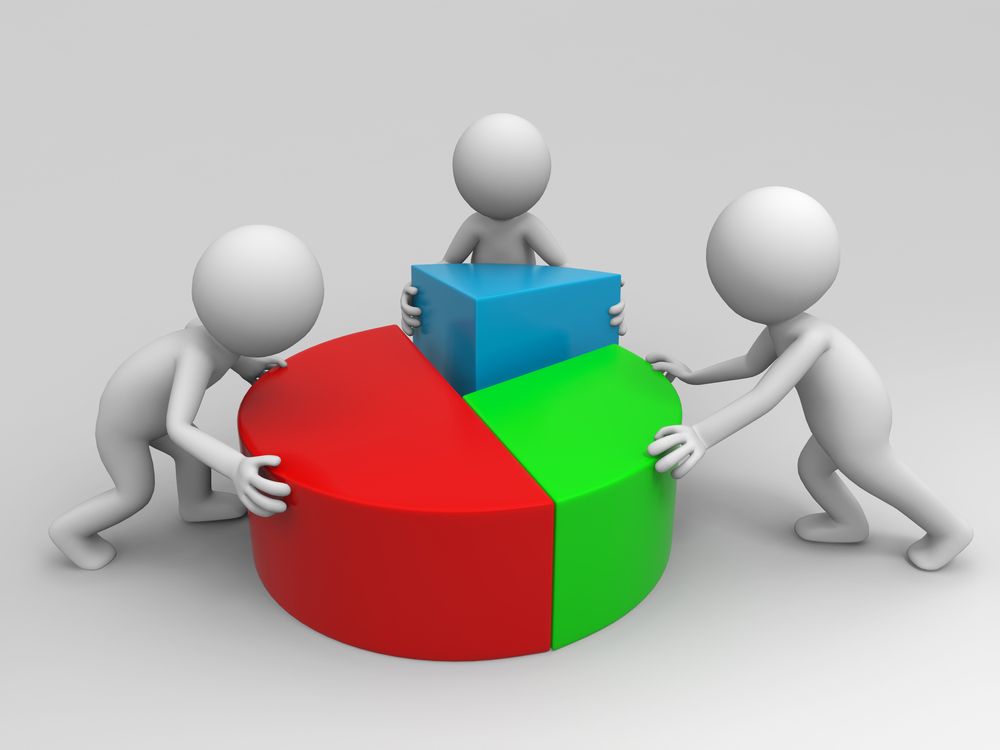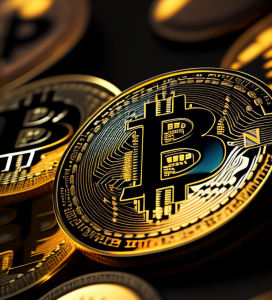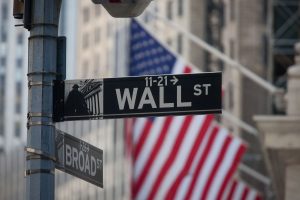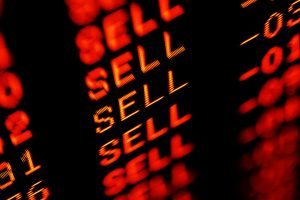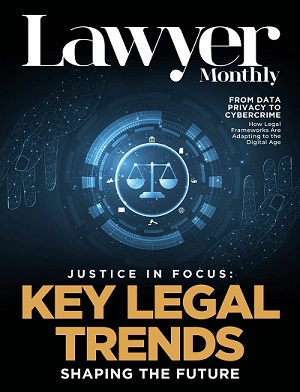The Market Is Crashing. These Are the Index Funds Worth Buying Now.
Ride Out the Chaos: Why One Solid Investment Might Be All You Need.
Tariffs. Trade wars. Tumbling markets. Headlines that feel like the end of the world. It’s easy to get rattled when everything seems to be swinging out of control.
But here’s the thing: the best investors aren’t chasing headlines. They’re not glued to tickers or reaching for the eject button every time the market drops. What they are doing? They’re building portfolios with staying power.
And that starts with a rock-solid core holding—something broad, low-cost, and designed to carry you through the next 30 years. Not just the next 30 days.
Zoom Out—Way Out
Markets fell 5% yesterday. That’s the kind of drop that makes your stomach flip, especially if you’re watching something like the Vanguard Total Stock Market ETF sink in real time. The temptation? Either throw more cash at the dip or pull everything out and hide.
But that kind of snap decision rarely ends well.
If you're feeling anxious, try this instead: take a breath, and take a step back. Ask yourself, “What am I really investing for?” Chances are, it’s not next week’s news. You’re investing for the long haul—retirement, freedom, maybe something you’ll pass down. That means your strategy should stretch across decades, not news cycles.
When you invest in something like a total market ETF, you’re not just buying a handful of stocks. You’re buying a sliver of the economy itself. You’re investing in what American companies will do in 2055—not what politicians are yelling about today.
The Core of a Smart Portfolio
You don’t need to outguess Wall Street. What you do need is a strong foundation: a low-cost, broadly diversified ETF that can weather storms and stay relevant over time.
Think of it like the frame of a house—unflashy, but essential. Once that’s in place, sure, you can hang some art. But don’t build the whole thing out of neon signs.
Want to Pick Stocks? Keep It to 10%
We get it—stock picking is fun. Maybe you’re convinced a certain tech stock is about to skyrocket. Or you’ve got a hunch that tariffs are going to hammer some international sector. Fine. Take 10% of your portfolio and go nuts.
Just don’t confuse that with a plan.
Even if you’re right, odds are the market already priced in the news. That apparel company? It’s probably already down 29%. That pharmaceutical firm in Europe? Already up 3.6%. It’s like showing up late to a party—most of the good stuff’s already happened.
The other 90% of your money deserves better. It belongs in something built to last.
So... Which ETF Should You Choose?
There are tens of thousands of options out there, but you really only need to focus on a few key traits.
Look for ETFs that are:
-
Big enough to be stable. We're talking at least $1 billion in assets, with daily trading volume that clears a million bucks or more.
-
Cheap to own. A good total market fund shouldn’t charge more than 0.03% a year. That’s three bucks annually for every $10,000 invested.
Want a fund that leans toward ESG principles or favors dividends? That’s fine—just make sure the extra cost is worth it. A few basis points here and there might not sound like much, but they compound quietly in the background, for better or worse.
But What About Hidden Fees?
Honestly? There aren’t many these days. Most online brokers charge exactly zero in commissions. The only real cost comes from the bid/ask spread—basically the tiny gap between what buyers and sellers are offering. For most big ETFs, that difference is barely noticeable—often less than a penny.
And in tax-advantaged accounts like IRAs or 401(k)s, you’re shielded from most tax headaches. In taxable accounts, yes, you’ll owe taxes on dividends (roughly 25% on average), but broad-market ETFs rarely throw off capital gains. And if you hold until you pass them on? Your heirs could get a free pass on those gains thanks to a step-up in cost basis. It’s one of the few remaining legal tax breaks worth knowing.
Top 10 Best Diversified ETFs for Long-Term Investors
If you're looking for a low-cost, high-efficiency way to invest for the long term, these ETFs should be on your radar. Based on yield minus expense ratio (a simple but effective performance proxy), these 10 exchange-traded funds stand out from the rest. They're diversified, liquid, and built to deliver steady returns over time.
✅ Here are the top 10:
-
SPDR Portfolio S&P 600 Small Cap ETF (SPSM)
Small-cap focus with high yield and minimal fees.
-
SPDR Portfolio S&P 400 Mid Cap ETF (SPMD)
Mid-cap exposure with a strong value tilt and ultra-low expense ratio.
-
SPDR Portfolio S&P 500 ETF (SPLG)
Tracks the S&P 500 with one of the lowest expense ratios on the market.
-
Vanguard 500 Index Fund ETF (VOO)
A flagship ETF from Vanguard, mirroring the S&P 500.
-
iShares Core S&P 500 ETF (IVV)
Ideal for core exposure to U.S. large-cap equities.
-
Vanguard Total Stock Market ETF (VTI)
Covers the entire U.S. stock market—large, mid, and small caps.
-
iShares Core S&P Total U.S. Stock Market ETF (ITOT)
A comprehensive low-cost total market fund.
-
Schwab U.S. Large-Cap ETF (SCHX)
Exposure to leading U.S. large-cap companies with rock-bottom fees.
-
Schwab U.S. Broad Market ETF (SCHB)
Broad market exposure with a blend of large, mid, and small-cap stocks.
-
JPMorgan BetaBuilders U.S. Equity ETF (BBUS)
JPMorgan's low-cost entrant into broad-market indexing.
This content is for informational purposes only and does not constitute financial, investment, or tax advice. Always do your own research and consult with a licensed financial advisor before making any investment decisions. Past performance is not indicative of future results. Investing involves risk, including the potential loss of principal.
Quick Answers to Smart Questions
Q: Should I buy a high-dividend ETF?
Only if you’re retired—and even then, ideally inside a tax-sheltered account. If you need to withdraw 3% of your portfolio each year, let your ETF yield 1.2% and just sell off a small slice of shares to cover the rest. It’s more tax-efficient.
Q: Does it matter how well an index fund did last year?
Nope. That’s the past. What counts is how closely it tracks its index and how low the fees are.
Q: Should I worry about tracking error?
A little bit of drift isn’t a big deal. What you do want to watch for is consistent underperformance. If a fund keeps missing the mark year after year, it might be time to look under the hood.
Q: Do factor funds work?
Sometimes. Things like momentum or low volatility can outperform—for a while. But the edge tends to fade. Vanguard once launched a low-liquidity factor fund (VFLQ). Guess what? It’s not around anymore.
What You Don’t See Can Cost You
Let’s talk trading for a second. You might see a 4-cent spread on an ETF like VTI, but behind the scenes, high-frequency traders are zipping in and out in microseconds, shaving pennies (or fractions of them) off each move.
They’re not villains—they help keep markets smooth—but you don’t want to feed them more than you have to. Use limit orders. Don’t trade in the first 30 minutes after the market opens or the last 30 before it closes. Stick to high-volume funds. It all adds up.
So When Should You Trade?
Mid-morning or mid-afternoon is usually your best bet. Avoid the daily rush at the open and close, when things get choppy and spreads widen. Think of it like avoiding airport security during the holiday crush. Same destination—just smoother sailing.
The Bottom Line
You don’t need a hot stock tip. You don’t need to call the market top. What you do need is a resilient portfolio that won’t buckle when things get rough.
Start with one good ETF. Make it the core of your investments. Keep your costs low. Hold through the noise.
That’s how you build real wealth.
🔍 Other Articles You May Like
1. Hedge Funds Face Margin Calls Amid Tariff Shock
As global trade tensions escalate, hedge funds are feeling the heat with rising margin calls and forced liquidations. Here’s what that means for markets.
2. Connecticut Investor Charged in $3.5M Hedge Fund Fraud
A hedge fund manager faces serious allegations of embezzlement. A cautionary tale for investors about due diligence and oversight.
3. Bitcoin vs. Gold: Is Crypto the New Store of Value?
As inflation concerns rise, Bitcoin is increasingly compared to gold. Could it become the next major store of value?



